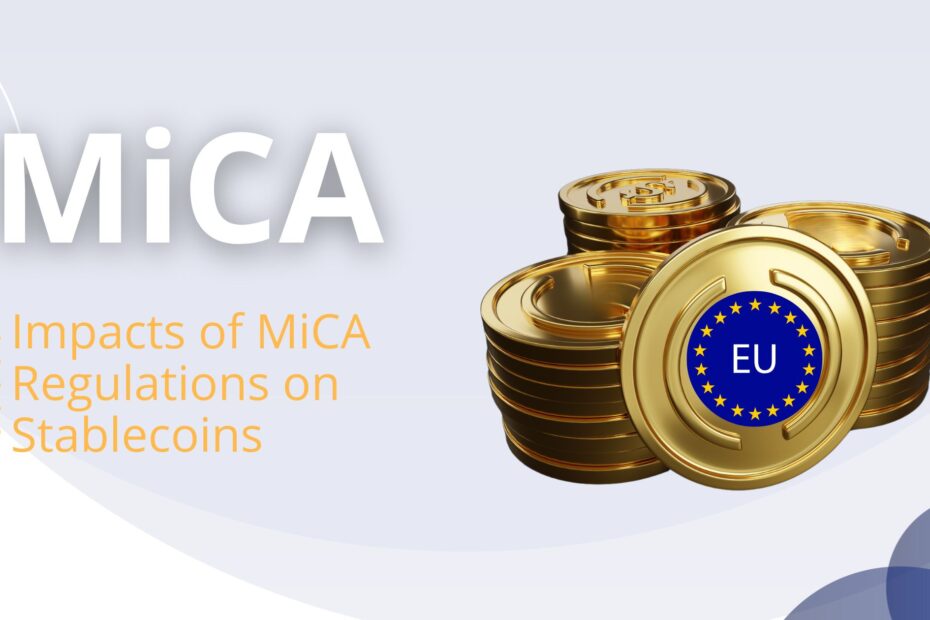Cryptocurrencies have revolutionized the financial world, providing an innovative and digital alternative to traditional currencies. Within this universe, stablecoins have gained popularity due to their relative stability compared to cryptocurrencies like Bitcoin. With the entry into force of the MiCA (Markets in Crypto-Assets Regulation) by the European Union on July 1, 2024, the landscape for these stablecoins is about to change significantly.
The new regulation aims to provide a clear and comprehensive legal framework for cryptocurrencies in the region, with a special focus on stablecoins. But what exactly does MiCA imply for users and issuers of stablecoins? Below, we will explore these new regulations in detail and their impact on the market.
What Are Stablecoins?
Stablecoins: An Introduction
Stablecoins are a type of cryptocurrency whose value is linked to a real asset, such as a fiat currency (e.g., the euro) or a commodity (such as gold). This feature allows them to maintain relative value stability, unlike other cryptocurrencies that are notoriously volatile.
Types of Stablecoins
There are several types of stablecoins, depending on the asset to which they are linked:
- Fiat-backed stablecoins: These are the most common and are backed by reserves of traditional currency, such as the US dollar or the euro.
- Commodity-backed stablecoins: Their value is linked to tangible goods like gold or oil.
- Algorithmic stablecoins: They use algorithms to adjust supply and demand and maintain their stable value.
MiCA Regulation and Its Impact on Stablecoins
Licenses for Stablecoin Issuers
One of the main provisions of MiCA is that stablecoin issuers must obtain a license from the European Securities and Markets Authority (ESMA). This requirement aims to ensure that issuers meet high standards of capital and governance. This is a crucial step to increase market confidence and ensure the security of investors.
Backing of Stablecoins
MiCA requires that all stablecoins be adequately backed by sufficient assets to maintain their value linked to the underlying asset. This means that issuers must hold an equivalent amount of assets in reserve to ensure that the stablecoins can be redeemed at any time.
Transparency and Information Disclosure
Another important measure is the obligation for stablecoin issuers to publish periodic information about their reserves and activities. This transparency will allow users to make more informed decisions about their investments.
Market Limits
For high-capitalization stablecoins (those with a market value exceeding 3 billion euros), MiCA sets additional market limits. This aims to prevent excessive concentration and ensure market balance.
Impact of MiCA on Stablecoin Users
Increased Security
With the implementation of MiCA, the security of stablecoins is expected to increase significantly. The strict licensing and backing requirements mean that issuers will have to operate under high standards, reducing the risk for investors.
More Transparency
Users will have access to more information about the stablecoins they invest in. Knowing how these coins are backed and managed will allow for greater confidence and more informed decision-making.
Possible Reduction in Options
Some stablecoins may not be able to meet the new MiCA requirements and therefore exit the market. This could reduce the variety of options available to users, although those that remain should be safer and more transparent.
Greater Price Stability
Regulations on the backing of stablecoins can help stabilize their prices and reduce volatility. This is especially beneficial for users seeking a cryptocurrency with fewer value fluctuations.
Conclusion
In summary, the MiCA regulation represents a significant step towards a more regulated and secure cryptocurrency market in the European Union. Stablecoins will benefit from a more transparent environment with greater backing guarantees, which will increase user confidence and foster sustained growth in the sector. However, it is crucial that both issuers and users stay informed and adapt their strategies to these new requirements.
At Mining Bitcoins Online, we focus on the process of mining various cryptocurrencies (Bitcoin, Bitcoin Cash, and Litecoin) at our mining facilities in Siberia. We aim to guide our shareholders in crypto mining, showing a lucrative investment path and highlighting that, while it involves certain risks, mining can provide a constant and secure source of income.
Frequently Asked Questions (FAQ)
What is MiCA? MiCA is the Markets in Crypto-Assets Regulation by the European Union, a regulation that establishes a legal framework for cryptocurrencies in the region, including stablecoins.
Why is the ESMA license important for stablecoin issuers? The ESMA license ensures that issuers meet high standards of capital and governance, which increases security and confidence in the stablecoin market.
How does MiCA affect the transparency of stablecoins? MiCA requires issuers to publish periodic information about their reserves and activities, providing users with greater transparency and data for informed decision-making.
What happens if a stablecoin does not meet MiCA requirements? Stablecoins that do not meet the new MiCA requirements may have to exit the market, thereby reducing the options available to users.
How does MiCA influence the price stability of stablecoins? By requiring that stablecoins be backed by sufficient assets, MiCA can help stabilize their prices and reduce volatility, providing a safer option for investors.

